
Snake Plants: Care Guide and Their Benefits
"You may not be a fan of snakes, and we cannot keep snakes in the house. But you can always have snake plants!"
Everyone adores snake plants, and they are unquestionably one of our favorite indoor plants to have at home! These are tough, low-maintenance plants that may survive for weeks without water. Whether you're as busy as a bee or you've killed your fair share of plants, this succulent is perfect for you!
Dracaena trifasciata, sometimes known as the snake plant, is a popular air-purifying plant that is hardy yet easy to care for and even approved by NASA.
Today, we're going to share with you everything you need to know about snake plants, including their complete care guide and advantages. These plants have numerous benefits for you and your home, so you do not want to miss out on this amazing succulent!
Snake Plant Origins & Family

The snake plant is native to the tropical woodlands of western Africa, including the northern sections of Nigeria and the Democratic Republic of the Congo. These are in the family Asparagaceae, and until 2017, they were called Sansevieria trifasciata.
St. George's sword, also known as viper's bowstring hemp or mother-in-law's tongue, is a fantastic plant for novice growers because it is so hard to destroy. The snake plant, a perennial that stays green all year, has dense clumps of glossy, dark green leaves.
Physical Characteristics and Growth Patterns
The leaves of a Dracaena trifasciata plant, which may grow to a height of 8 feet, are typically stiff and upright. Such a beautiful indoor plant has leaves of a bright green color, typically framed by yellow borders, with stripes and textures on the foliage.
The phenomenal snake plant is Dracaena trifasciata, although there are many additional sub-species and varieties of this plant that have striking, visually appealing shapes and colors. These plants are such a suitable decor if you're trying to fill out your space. Not only will their sword-like leaves fill your dull space, but their attractive shades will also add a pop of color, spicing up your entire area.

In terms of their proportions, mature snake plants have dark green leaves and typically measure 70 to 90 centimeters (2.3 to 3.0 ft) in length and 5 to 6 centimeters (2.0 to 2.4 in) in width, however, they can grow taller than 2 meters (6.6 ft) in ideal conditions.
There are several species of snake plants, and they all vary in leaf patterns and colors. Some varieties have cylindrical leaves, while others have twisted, wavy leaves. These are extremely stunning succulents with tremendous benefits to have at home!
How Many Varieties Are Out there?
This succulent has around 70 species in the category of Sansevieria. There are numerous variants and cultivators of this plant, and all have unique and stunning leaf shapes in different shades of green. Some varieties include
- Sansevieria trifasciata, "Mother-in-Law’s Tongue"
- Sansevieria "Golden Hahnii"
- Sansevieria "Desert"
- Sansevieria "Cylindrica"
- Sansevieria "Compacta"
- Sansevieria "Goldiana"
- Sansevieria trifasciata "Twist"
- Sansevieria "Black Gold"
and the list goes on. The trifasciata laurentii, hahnii, and Bantel's sensations have been recognized as outstanding garden plants by the Royal Horticultural Society. Some of the species are extremely rare and unique to have in your collection and varieties like,
- Sansevieria ehrenbergii "Samurai"
- Sansevieria masoniana "Whale Fin"
- Sansevieria aubrytiana "Sayuri"
-
Sansevieria zebra "Siam Silver"
Read our blog on the ultimate guide to snake plant varieties!
The foliage on these plants comes in a range of colors and shapes, from deep green to light green to gray and copper. Therefore, there is a snake plant suitable for any climate or situation. It's fine to bring a couple of snake plants inside; they're nearly impossible to kill. And your mother-in-law would be very pleased! get it? ;)

Now, we are moving on to general care for snake plants. We will discuss their soil, water, and temperature conditions and requirements. along with other significant matters to consider like common pests, diseases, propagation, and repotting. Stay tuned till the end to get mind-blown by the amazing benefits that these snake plants will bring!
Snake Plant Maintenance
This plant is difficult to destroy and requires little attention, making it a popular recommendation among professional gardeners. It thrives in pots and is equally at home on desktops and floors. Overwatering will kill the plant and can cause root rot in this drought-resistant plant. These plants are great for those who have never cared for houseplants before because they may survive for weeks without water.
Soil
To thrive, snake plants need a potting medium that drains quickly and is quite loose. Cocopeat can be used instead, although it doesn't always rehydrate well and can lead to drainage issues. So, we recommend using all-purpose cactus or succulent soil because it's the safest option.
Make sure the saucer doesn't collect any water by using a pot with a hole at the bottom. Swamped soil is not ideal for snake plants.
Water
The only thing you must remember when watering these plants is to allow the soil to dry in between waterings. To check the soil moisture level, poke a stick into the ground or stick your finger in there for a few inches. When the soil is dry to the touch, only then should you give them a bath or shower. Be careful not to get the leaves wet when you water, as this might lead to fungal diseases.
When they are dormant in the winter, watering them once a month is sufficient. These incredible plants are more forgiving of underwatering than overwatering.
Snake plants require special care when being watered. If you forget to water your plants for an extended period, they will eventually die. However, these plants can survive for months without regular attention. Just keep an eye on their leaves every once in a while.
TIP: If you notice your plant's leaves are drooping or feeling mushy, it's a sign your plant is thirsty, so give them a good soak before a dry spell.
Light

When it comes to brightness, snake plants are forgiving. These plants do well in either direct sunlight or steady indirect light. They do well in both bright sunlight and low lighting. Quite tolerable, wouldn't you say?
TIP: If you see a few droopy, wrinkled leaves, your friends may use some more light.
Potting and Repotting
This plant has deep, thick roots, so it would benefit from a solid container. If you're going to be potting them, make sure to use a strong material for the pot as they can easily crack and break a weak container.

Snake plants are relatively slow-growing succulents that rarely need to be repotted. They may need to be separated from the colony every year because of their quick growth. An excellent approach is to always use the fresh potting mix when repotting.
TIP: When repotting snake plants, don't bury the roots too deeply. Plant it at the same depth it had been growing in its previous container.

How to Pick the Perfect Spot for Your Snake Plants?
Snake plants thrive in warm conditions. These should be kept out of the drafty windows, as they may be destroyed in the cold. They are comfortable between 70 and 90 degrees Fahrenheit.
Keep your snake plants from getting startled while you move around the room. How? Snake plants, when exposed to sudden and bright sunlight from a toppled sun, get shocked by this change. Regardless, they gradually adapt to their areas. What did we tell you about their adaptability?
Fertilizing Snake Plants
It is best to give them moderate cactus or diluted slow-release fertilizer during the growing season. It's best not to fertilize throughout the winter.
Pruning and Polishing
If you want them to keep growing healthy, it's best to prune them sometimes. Remove leaves at the soil line or snip off damaged, wilted leaves with sterile pruning shears, a knife, or scissors. Keep in mind that unnecessary pruning can cause stress for your plants, so prune during their active growth period to promote fresh, healthy development.
TIP: For those who are concerned about the size of their snake plant, here is a helpful hint. Starting with the tallest leaves, carefully remove them. Likewise, you can get rid of any leaves that are droopy, damp, or discolored.
Propagating a Snake Plant
We can all agree that snake plants are fantastic, versatile plants that are simple to cultivate and propagate.
Dracaena plants can be quickly divided from their tribe and planted in a new container to reproduce. This is best done during the growing season (spring or summer). If a new shoot appears from the ground, it does not need to be transplanted into the main plant. It is also possible to use cuttings to propagate plants. It is a slow-growing plant, so it could take two months before you notice new growth.
Inviting Pests and Diseases
Even an unbreakable champion like a snake plant can fall prey to common pests like scales, mealybugs, aphids, and whiteflies. It's in your hands to protect your snake plant from pest invasion. When a plant is improperly watered, has poor air circulation, or has high humidity, pests move into its new house.
Use a light spray of water or some organic neem oil to kill any insects on your plant.
Leaves that are discolored, dropping off, or curling up are all signs of a potentially unhealthy plant, but you may solve the problem by knowing where it went wrong:
- Use a well-draining soil mix and provide sufficient sunlight to prevent falling or droopy leaves.
- When leaves turn brown or yellow, it's usually a sign of pests, too much water, or rotting roots.
- Root rot and plant stress are brought on by overwatering, which makes your plant vulnerable to pests.
Now, let us enlighten you with the fantastic benefits or advantages of having a snake plant around you that is even approved by NASA!
Benefits Of Dracaena Trifasciata

Snake plants provide several health benefits in addition to the ambiance and aesthetic appeal. To name a few,
1. Indoor air filtration
According to a NASA study, snake plants and other indoor plants have been shown to reduce VOCs (volatile organic compounds) such as benzene, formaldehyde, nitrogen oxide, and others. Snake plants are excellent natural air purifiers that everyone should have around.
2. Effective for Allergies
Snake plants produce oxygen and contribute moisture to the atmosphere. They help reduce the impact of airborne problems such as allergens and dust. Dracaena plants also aid in enhancing air quality, which may help reduce allergies and asthma.
3. Mental Health Booster
Indoor plants have been shown to improve focus, productivity, and concentration, resulting in mental clarity. Because of its therapeutic qualities, horticultural therapy is even employed in mental health care. Indoor plants, such as snake plants, may be effective in work environments, rooms, and kitchens.
4. Oxygen Generator
An excerpt from Harvard University Extension research demonstrates that the snake plant is one of the best oxygen-producing houseplants. As a result, keeping a few snake plants in your bedrooms and living room might be advantageous.
5. CO2 Eliminator
Snake plants have been proven to lower CO2 levels at night. These plants not only purify the air but also absorb CO2, even at night. This makes snake plants an awesome addition to your houseplant collection to keep toxins out of the air.
6. The Magic of Feng Shui
In feng shui, spiky plants are thought to be effective at repelling negative chi. It gives protecting and cleansing energy to your environment when it is situated in an appropriate spot.
In addition to their benefits, as previously stated, these plants are low-maintenance and require little care to thrive.
Know more about succulents and their benefits here!
Conclusion
Snake plants, in general, are highly kind and forgiving. They are versatile and adaptable to many conditions without making a fuss. Dracaena trifasciata is a wonderful plant that is easy to care for and is not easily killed. Because they are everlasting perennials, their gorgeous green tints last forever.
Snake plants are adaptable and should be in your home plant collection since they come in so many forms, sizes, and colors. You can also simply multiply this plant!
Check out our snake plant collection here!
FAQ's
Is the snake plant toxic to pets?
That's a good question. According to the ASPCA, snake plants are mildly toxic to cats and dogs. Chewing or ingesting can result in vomiting or diarrhoea.
How many species of snake plants exist?
With over 70 species, snake plants have many varieties of beautiful colors and foliage. These 70 species may even have their own sub-species, so it's a quite huge family.
How fast can snake plants grow?
Snake plants are slow-growing plants. However, if they are grown outdoors in the summer, they might experience a boost in growth.
How long does a snake plant live?
The average lifespan of a snake plant is five to ten years; however, it can live up to 25 years or more.
Is it simple to care for snake plants?
Snake plants are simple, beginner-friendly plants that are difficult to kill. It's a fantastic houseplant with a lot of advantages for you and your surroundings.
Snake Plants Collection
-
Original price Rs. 549.00Original price Rs. 549.00 - Original price Rs. 549.00Original price Rs. 549.00Current price Rs. 249.00Rs. 249.00 - Rs. 249.00Current price Rs. 249.00
Sansevieria (Snake Plant) Black Gold Superba
Our customers favorite, the Sansevieria Suberba Black Gold is a real eye-catcher! Its striking blackest green leaves with golden edges bring instan...
View full detailsOriginal price Rs. 549.00Original price Rs. 549.00 - Original price Rs. 549.00Original price Rs. 549.00Current price Rs. 249.00Rs. 249.00 - Rs. 249.00Current price Rs. 249.00Sale -
Original price Rs. 449.00Original price Rs. 449.00 - Original price Rs. 449.00Original price Rs. 449.00Current price Rs. 219.00Rs. 219.00 - Rs. 219.00Current price Rs. 219.00
Sansevieria (Snake Plant) Crooked Plant
The Crooked Snake Plant (Twisted Sister Snake Plant) has vibrant gold and green variegated foliage with unique twists and curls, making it a belove...
View full detailsOriginal price Rs. 449.00Original price Rs. 449.00 - Original price Rs. 449.00Original price Rs. 449.00Current price Rs. 219.00Rs. 219.00 - Rs. 219.00Current price Rs. 219.00Sale -
Original price Rs. 899.00Original price Rs. 899.00 - Original price Rs. 899.00Original price Rs. 899.00Current price Rs. 249.00Rs. 249.00 - Rs. 249.00Current price Rs. 249.00
Sansevieria (Snake Plant) Futura Superba Green Big
Your plant collection will need the stunning Sansevieria Futura Superba! This compact snake plant boasts sharp green leaves and charming yellow edg...
View full detailsOriginal price Rs. 899.00Original price Rs. 899.00 - Original price Rs. 899.00Original price Rs. 899.00Current price Rs. 249.00Rs. 249.00 - Rs. 249.00Current price Rs. 249.00Sale -
Original price Rs. 449.00Original price Rs. 449.00 - Original price Rs. 449.00Original price Rs. 449.00Current price Rs. 199.00Rs. 199.00 - Rs. 199.00Current price Rs. 199.00
Sansevieria (Snake Plant) Golden Flame
The Sansevieria Golden Flame is an easy-to-care-for succulent with yellow-edged pointed leaves that resemble flickering flames. It can thrive in mo...
View full detailsOriginal price Rs. 449.00Original price Rs. 449.00 - Original price Rs. 449.00Original price Rs. 449.00Current price Rs. 199.00Rs. 199.00 - Rs. 199.00Current price Rs. 199.00Sale -
Original price Rs. 499.00Original price Rs. 499.00 - Original price Rs. 499.00Original price Rs. 499.00Current price Rs. 299.00Rs. 299.00 - Rs. 299.00Current price Rs. 299.00
Sansevieria (Snake Plant) Golden Hahnii Big
Sansevieria Golden Hahnii Plant – a must-have for your home. This best-selling Snake plant not only adds a touch of green to your surroundings, but...
View full detailsOriginal price Rs. 499.00Original price Rs. 499.00 - Original price Rs. 499.00Original price Rs. 499.00Current price Rs. 299.00Rs. 299.00 - Rs. 299.00Current price Rs. 299.00Sale

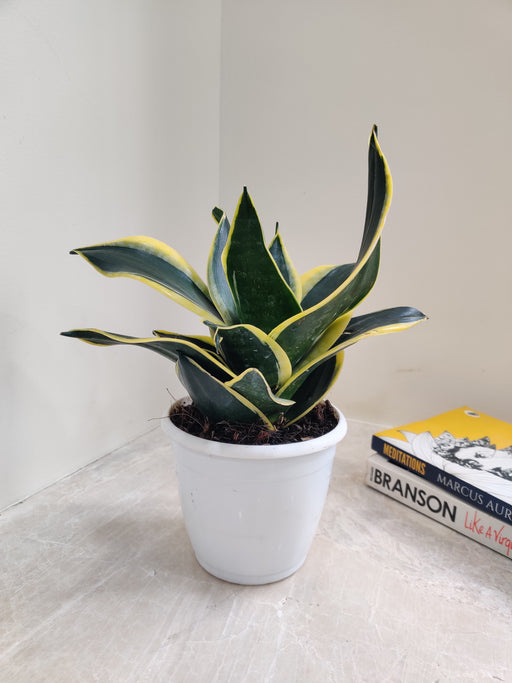
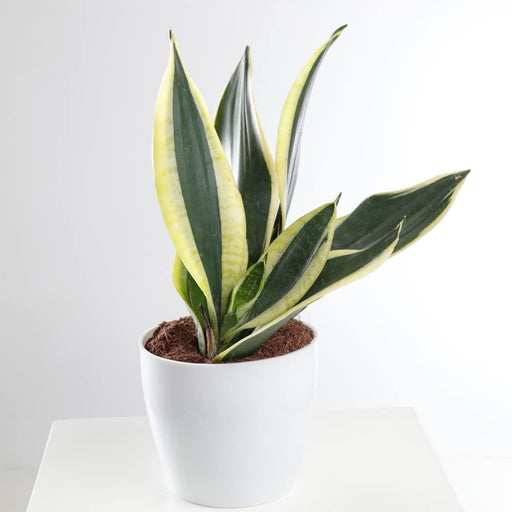
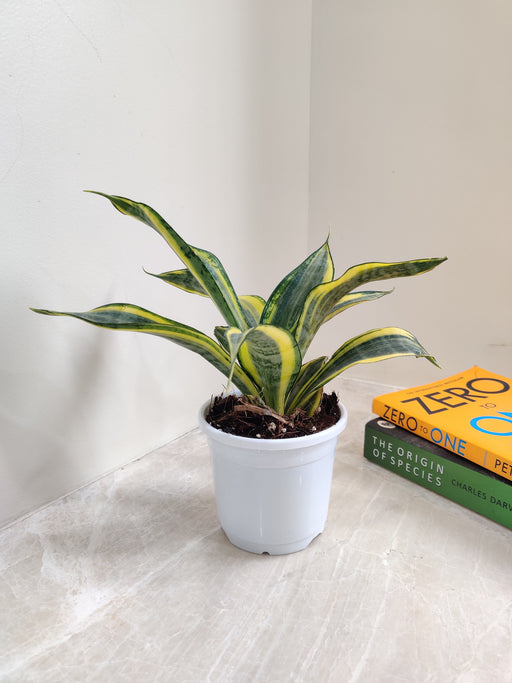
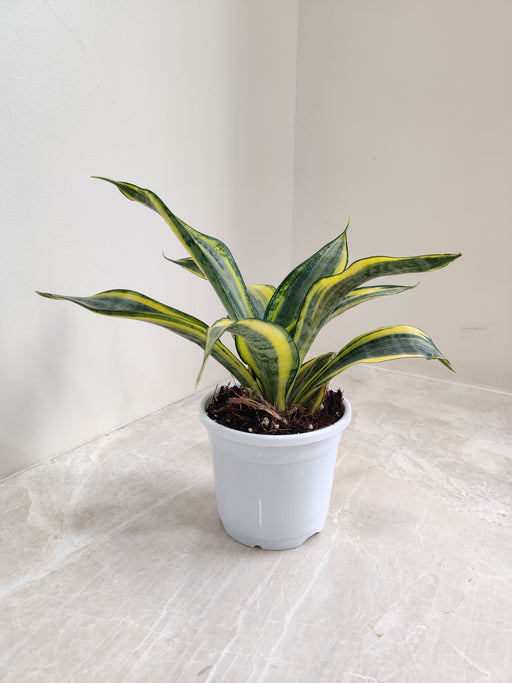
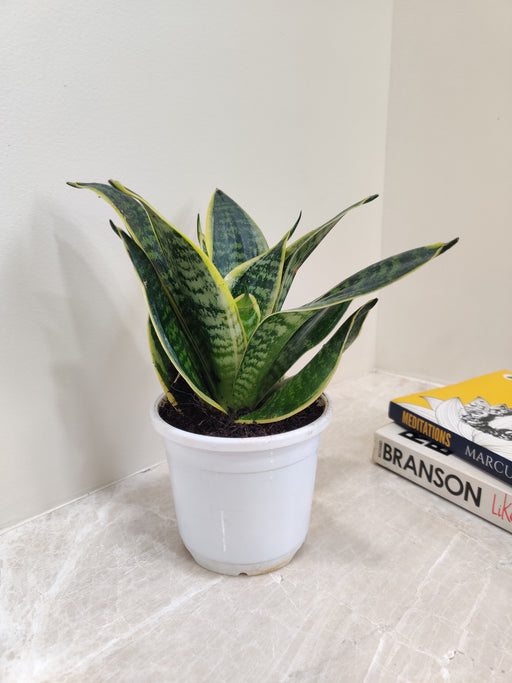
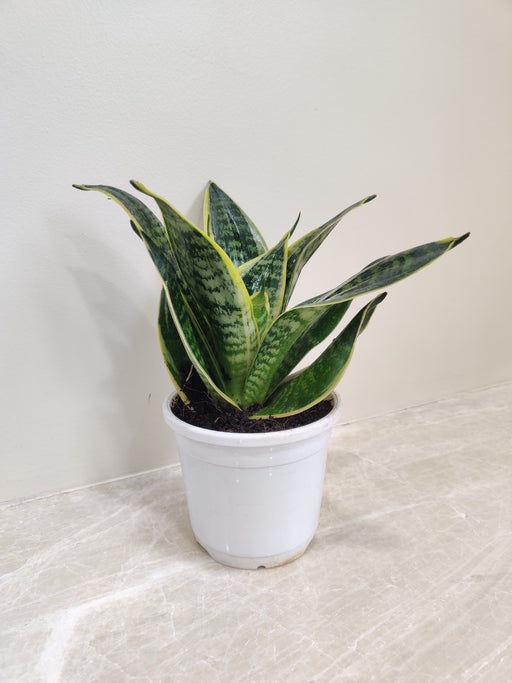
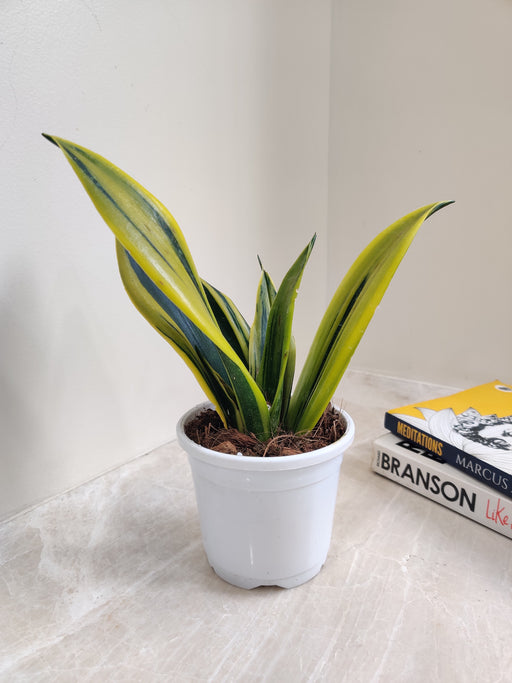
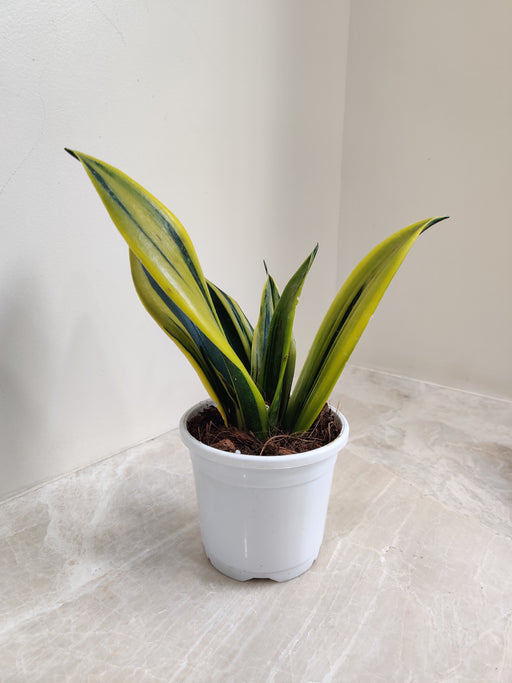
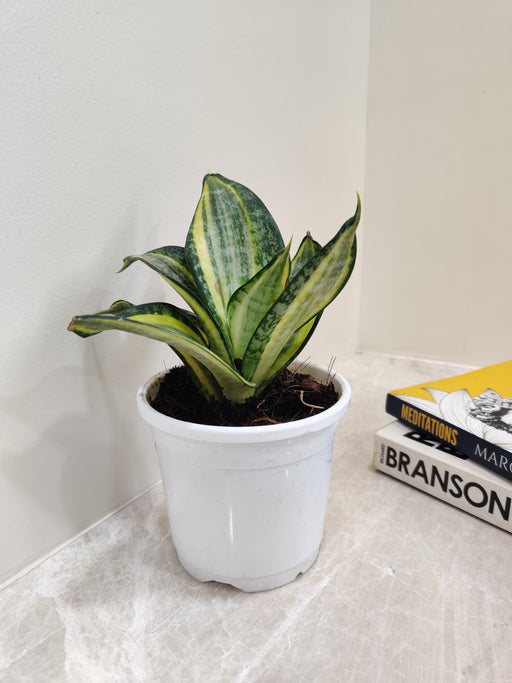
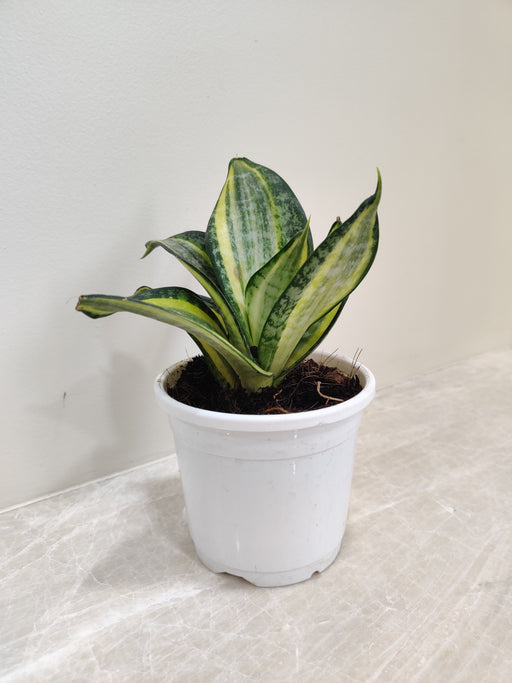
Leave a comment